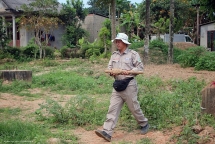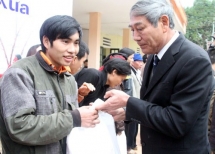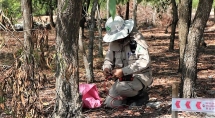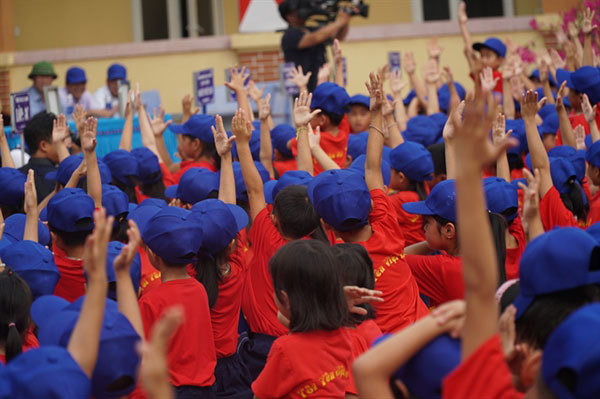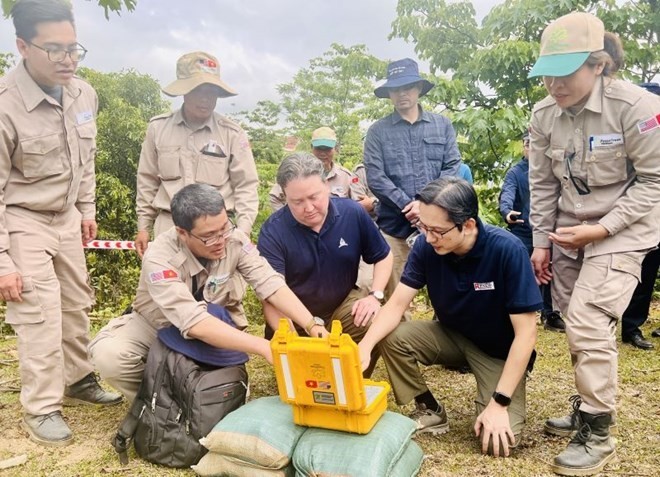Removing all landmines and unexploded ordnance in Vietnam by 2030, can it be done?
| A recoilless projectile safely removed from Quang Tri's residential area | |
| Clearing deadly legacy of war, bit by bit | |
| Quang Tri: Grenades near villagers’ garden safely destroyed |
| |
| Pupils of Vo Ninh primary school in the central province of Quang Binh respond to Mine Risk Education quiz. — Photos courtesy of UNDP Vietnam |
While it has been decades since Vietnam has experienced war, the country is still suffering from a legacy of landmines and unexploded ordnance found in many villages throughout the country.
Vietnam is now part of a global battle with the Coronavirus pandemic but once the country and the world have overcome this crisis, we can once again turn our energy and resources to a shared ambition of eliminating the impact of unexploded ordnance and landmines on the population of Vietnam, as well as putting a complete stop to civilian casualties from remnants of war by 2030.
On January 22, the Secretary-General of the United Nations, which also celebrates its 75th anniversary this year, outlined to the General Assembly a set of priorities for the entire year, as well as for the next 10 years, as part of the Decade of Action. This is a strong call from the United Nations to all sectors of society, both globally and locally, to act together for the achievement of the 17 Sustainable Development Goals by the deadline in 2030.
Today, on April 4, the United Nations and its Member States mark International Mine Awareness Day, a day to remember the thousands of civilians around the globe, including many Vietnamese citizens, killed or injured by indiscriminate weapons left from wars and conflict. This is also a day to remember the many brave men and women working tirelessly throughout the country to rid the earth of this deadly legacy of war. True to this spirit, the 2020 campaign calls for us all to collaborate in achieving ambitious goals with the overall theme: Together for Mine Action: Give Life Back. As the Secretary-General said in his remarks, “the achievements of the mine action community show that, in working together, we can reach milestones once seen as impossible.”
As the representatives in Vietnam of the Korea International Co-operation Agency (KOICA Vietnam) and the United Nations Development Programme (UNDP Vietnam), we are responding to these calls for action in close partnership with the Government of Vietnam. Our organisations collaborate with the Government to achieve the Sustainable Development Goals in Vietnam, and two years ago KOICA and UNDP formed a strong partnership with the Ministry of National Defence to address the legacies of war. As part of the Korea-Vietnam Mine Action Project we are already engaged in all aspects of mine action. These include surveying and clearance to free up land; risk education to reduce new casualties; customised assistance to accident survivors; data management; as well as overall support to the Government in policy making and capacity strengthening.
| |
| Han-Deog Cho - KOICA Country Director in Vietnam and Caitlin Wiesen - UNDP Resident Representative in Vietnam |
This joint effort has already yielded important achievements such as surveying more than 15,000 hectares of land and clearing 3,000 hectares of contaminated areas in Quang Binh and Binh Dinh, and providing more land for development projects in these provinces. Meanwhile, a database was created with 75,000 persons with disabilities, of which 9,100 were caused by unexploded ordnance or landmines. In addition, nearly 80,000 local students and community members were educated about how to remain safe in areas with potential contamination. The project is truly implemented in the spirit of acting together to bring back life and development to land previously contaminated, as well as giving back opportunities to those who have suffered from UXO accidents by giving them means and possibilities to contribute once again to their families and communities.
The Government of Vietnam has laid the groundwork for great things to happen in this decade by issuing Decree 18 on implementation and management of mine action and the related Circular 195. These mandate the Vietnam National Mine Action Centre (VNMAC), our main partner, to act upon and co-ordinate the efforts to reduce the impact of unexploded ordnance and landmines on the Vietnamese population. Our joint project has, among other things, helped VNMAC with data about contamination and survivors in Quang Binh and Binh Dinh, which the Government considers among the provinces most greatly affected. Other development partners are helping provinces such as Quang Tri and Thua Thien-Hue. Hence, the Government of Vietnam and the international community are gathering important data for evidence-based policy making in the mine action sector. We will continue to offer opportunities for Vietnam to collect necessary data to measure progress, as well as enabling the Government to set ambitious targets for this decade. We stand ready to support the Government of Vietnam to achieve a shared ambition of eliminating the impact of unexploded ordnance and landmines on the population of Vietnam by 2030, as well as putting a complete stop to civilian casualties from the remnants of war.
The world’s attention right now is on addressing the coronavirus pandemic. This is understandably also the case in Vietnam. We applaud the efforts already made by the Government of Vietnam, and we continue to offer our help right now, as well as to the phase afterwards to recover from the impact of the virus. And there will be a day, and hopefully soon, when we look back at this as something which we, humanity, solved by acting together. Just as there will be a day, and no later than in 2030, when we look back at the issue of contamination of unexploded ordnance and landmines in Vietnam, as a problem we acted upon and overcame together.
We encourage you all to join this call for a Decade of Mine Action to give back the land to local communities, leave no-one behind and ensure we fulfill the development aspirations of those who need it the most.
And you can learn more about KVMAP here
by Han-Deog Cho and Caitlin Wiesen*
* Han-Deog Cho is KOICA Country Director in Vietnam and Caitlin Wiesen is UNDP Resident Representative in Vietnam.
 | Project RENEW, Quang Ngai Red Cross Chapter educate people about dangers of landmines Project RENEW will help the Red Cross Association of Quang Ngai province increase ERW awareness of the local population in order to reduce the number ... |
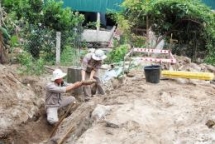 | Vietnam, Norway join force to settle post-war landmines On the occasion of the International Day for Mine Awareness and Assistance in Mine Action (April 4), Grete Lochen, Norway’s Ambassador to Vietnam, shares her ... |
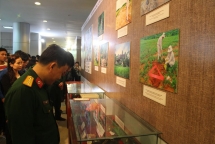 | Landmines still take heavy toll on Vietnamese people An exhibition on explosive and toxic remnants of war as well as efforts made by the authorities and non-governmental organisations in clearance to make Vietnam ... |
Recommended
 Focus
Focus
Vietnam Leaves Imprints on the World Peacekeeping Map
 Viet's Home
Viet's Home
“Global Vietnamese Singing 2025” - Connecting Hearts Longing for Homeland
 Viet's Home
Viet's Home
Vietnam’s People's Public Security Force Actively Contributes to UN Peacekeeping Operations
 Viet's Home
Viet's Home
HAUFO Enhances Competence of People-to-People Diplomacy Personnel
 Viet's Home
Viet's Home
Hands that Reserve Da Long Brocade Craft
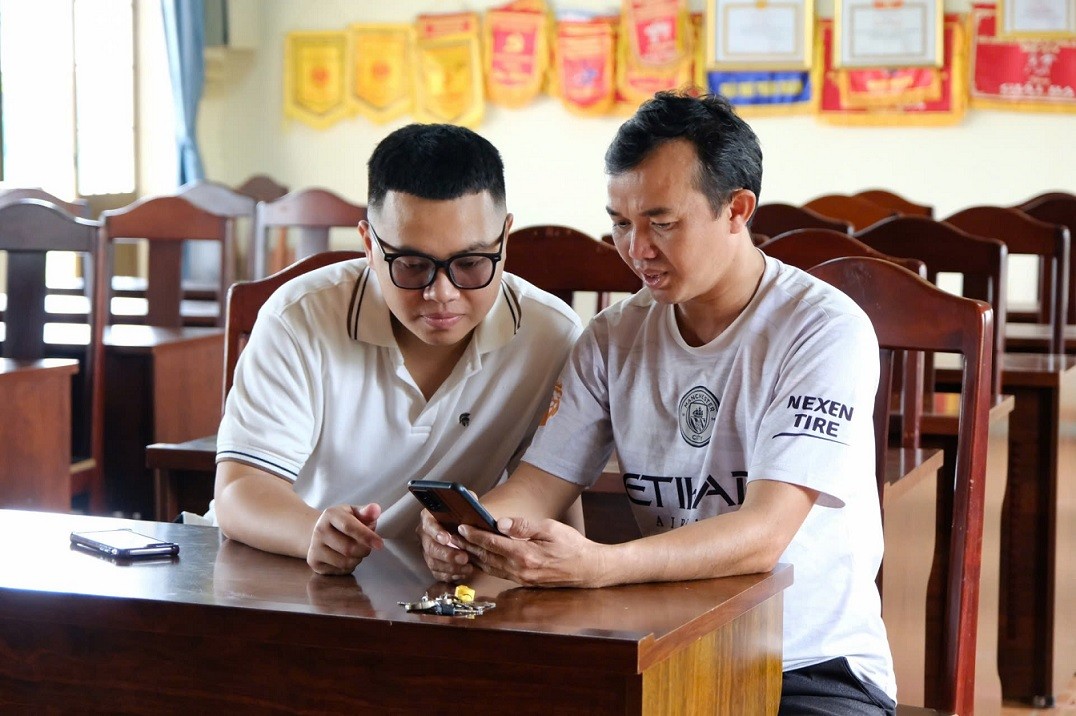 Viet's Home
Viet's Home
Da Rsal – How Digital Transformation Reshape a Poor Commune
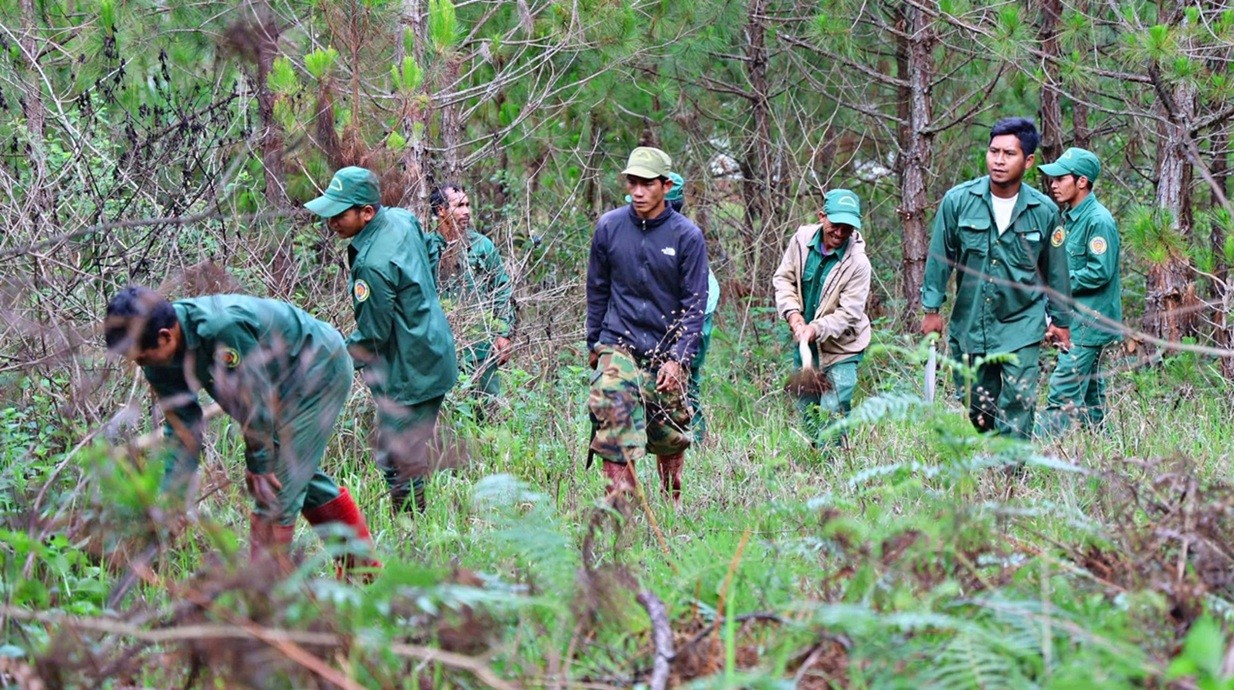 Viet's Home
Viet's Home
Vietnam Classified as “Low Risk” Under the EU Anti-Deforestation Regulation
 Viet's Home
Viet's Home

